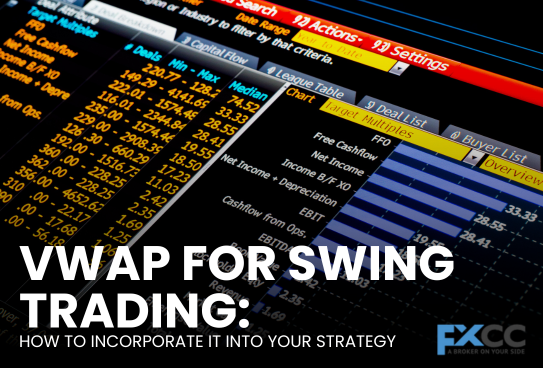Swing trading is a widely popular trading style, attracting both novice and experienced traders. It allows for flexibility and the potential to capture profits over days or weeks. Among the many tools traders rely on, the Volume Weighted Average Price (VWAP) stands out as a reliable indicator that helps refine entry and exit points. But what exactly is VWAP, and how can you use it effectively in swing trading? Let’s dive into the details and uncover how this tool can become a vital part of your trading strategy.
What is VWAP?
VWAP, or Volume Weighted Average Price, is a trading indicator that represents the average price of a security, weighted by its trading volume over a specified period. Unlike simple moving averages, which calculate based only on price, VWAP incorporates both price and volume. This makes it particularly useful in assessing the fair value of a stock during a trading session.
In simpler terms, VWAP tells you the average price at which most trades occurred, considering both the price level and the activity at each level. For swing traders, this indicator is valuable as it helps to identify whether the price is relatively high or low compared to its average trading activity.

Why is VWAP Important for Swing Traders?
Swing trading often involves holding positions for multiple days, aiming to profit from price swings. During this process, knowing when to enter and exit positions can significantly impact profitability. VWAP provides an objective benchmark for these decisions by helping traders gauge the market sentiment.
If the price is above VWAP, it indicates bullish momentum, suggesting that buyers are dominant. Conversely, a price below VWAP signals bearish conditions, meaning sellers are in control. By integrating VWAP into your strategy, you gain insights into trends and can align your trades with the prevailing market direction.
How VWAP Differs from Moving Averages
Although VWAP and moving averages may seem similar at first glance, they serve different purposes. Moving averages smooth out price data over a set period, reflecting the general trend. VWAP continuously updates over the trading day, offering real-time data by factoring in both price and volume changes.
For swing traders, VWAP can act as a dynamic support or resistance level, whereas moving averages are better suited for broader trend analysis. This makes VWAP particularly effective for pinpointing precise entry and exit points within a short to medium-term trading horizon.
Using VWAP to Identify Trading Opportunities
VWAP can be instrumental in identifying high-probability trading setups. One popular way to use VWAP is to treat it as a benchmark for spotting entry points in trades. For instance, when the price crosses above the VWAP line, it may indicate a potential bullish breakout. In contrast, when the price dips below VWAP, it may indicate a potential bearish trend reversal.
Swing traders can also leverage VWAP to confirm the strength of a trend. If the price remains consistently above VWAP during an uptrend, it reinforces the idea that buyers are in control. In such scenarios, traders might consider adding to their long positions. Similarly, a sustained move below VWAP in a downtrend validates the dominance of sellers, which may encourage short-selling opportunities.
Incorporating VWAP into Your Swing Trading Strategy
To make the most of VWAP in your swing trading strategy, you need a structured approach. Start by adding the VWAP indicator to your charting platform, ensuring it updates in real time. Then, observe how the price interacts with the VWAP line throughout the day.
When trading, look for confluence between VWAP and other technical indicators such as trendlines, Fibonacci retracements, or support and resistance levels. For instance, if the price bounces off VWAP and aligns with a key support level, it strengthens the case for a long trade. On the flip side, a breakdown below VWAP combined with resistance suggests a bearish setup.
The Role of VWAP in Risk Management
In swing trading, risk management is crucial to long-term success. VWAP can act as a guide for setting risk parameters. For example, traders often use VWAP as a dynamic pivot point to assess whether a trade is worth entering based on the current risk-reward ratio.
If the price is far above VWAP, it might not be the best time to initiate a long trade, as the risk of a pullback increases. Waiting for the price to retrace closer to VWAP before entering can enhance the probability of a favorable outcome. This disciplined approach ensures you’re not chasing trades, which is a common pitfall among swing traders.

Limitations of VWAP in Swing Trading
Though VWAP is a valuable tool, it does come with some limitations. It is most effective during intraday trading, as it resets daily, which may not fully capture long-term trends in swing trading. For this reason, many traders use VWAP in conjunction with other indicators and analysis techniques. Moreover, VWAP may lose its effectiveness in low-volume stocks or during extended market hours when trading activity is sparse. As a swing trader, it’s essential to combine VWAP with a broader market analysis to avoid relying solely on one indicator.


